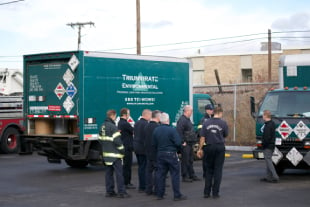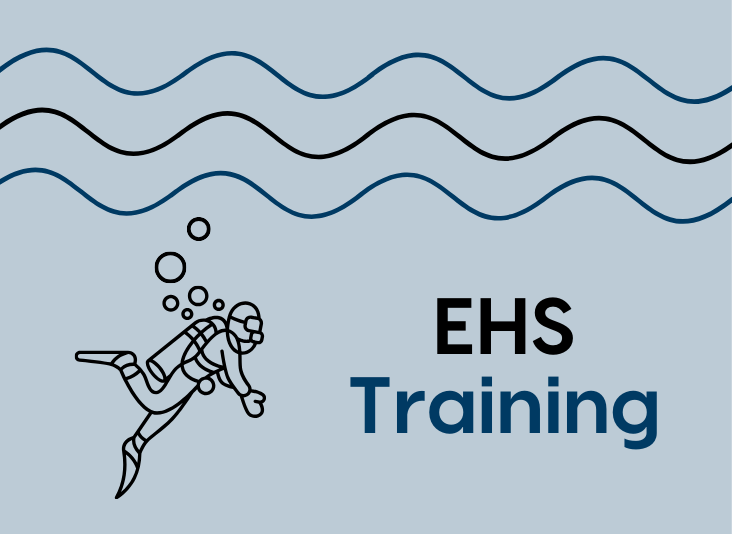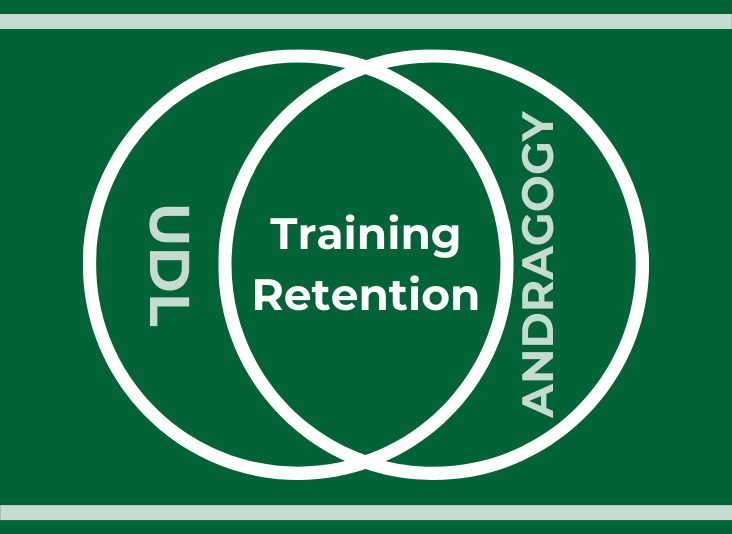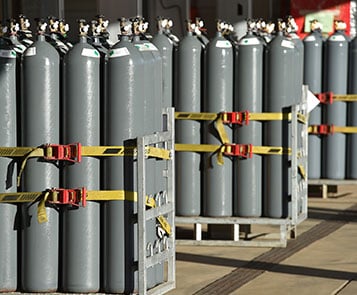Emergency Responders? We Don't Need No Stinkin' Responders!
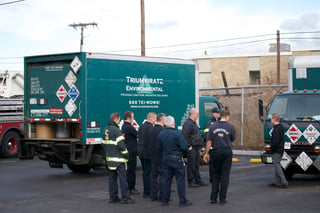 OK, here's the scenario: Our hypothetical employer (factory, institution, research facility, hospital, take your pick) makes an executive decision to "out-source" all hazardous chemical emergency response actions to an outside contractor. All employees are instructed that in the case of a chemical spill, they are not to respond, but to call the internal emergency contact person, who will then call the outside spill response service provider. Hands off, nice and neat, no internal hazmat response team, no need for emergency spill response (HAZWOPER) training of employees, it's all good, right?
OK, here's the scenario: Our hypothetical employer (factory, institution, research facility, hospital, take your pick) makes an executive decision to "out-source" all hazardous chemical emergency response actions to an outside contractor. All employees are instructed that in the case of a chemical spill, they are not to respond, but to call the internal emergency contact person, who will then call the outside spill response service provider. Hands off, nice and neat, no internal hazmat response team, no need for emergency spill response (HAZWOPER) training of employees, it's all good, right?
Not so fast. What this employer does not realize is that in the event of a release they are in fact: 1) deciding if the incident could threaten human health or the environment; 2) implementing an incident command system; 3) assigning roles and responsibilities; 4) implementing defensive and/or offensive response actions; 5) notifying, or failing to notify, outside agencies; and the list goes on! This sure sounds like "responding," and a lot like the stuff that's covered in a good emergency response training class!
The question now becomes, are all the people involved in the response trained in accordance with their anticipated rolls and response actions? Also, have they the knowledge and tools to make the correct decisions and perform assigned tasks?
Crucial decisions are often made in the initial stages of a hazardous chemical release, often by employees not always thought of as "emergency responders." According to OSHA's emergency response training standard, 29 CFR 1910.120(q) (HAZWOPER), an employee must be trained to the level to which they are expected to respond - awareness level, operations level, or technician level. A simple way to approach this is to think of employees as fitting into one of these three categories:
- Those who may be first to discover a hazardous chemical release and are expected only to recognize a potential threat, run away, warn others in the area to do the same, and then call for help; or
- Those who may come back to take defensive actions at a safe distance; or
- Those who will put on a full chemical protective suit, atmosphere-supplying respirator, and perform reconnaissance or take offensive actions in areas that could be a threat.
Yup, those are the basic descriptions of the three levels of OSHA HAZWOPER training.
So, in conclusion, if we go back to our hypothetical employer, we see that hiring an outside spill contractor, although a crucial part of any response plan, only serves to add a tool to the emergency coordinator's tool bag - the ability to assign additional roles under the employer's incident command structure. By "outsourcing," they've neither transferred responsibility, reduced decision making, nor removed the need for employee training.
Are your employees in need of OSHA HAZWOPER training? Click the button below to view our training services and access our upcoming schedule!



